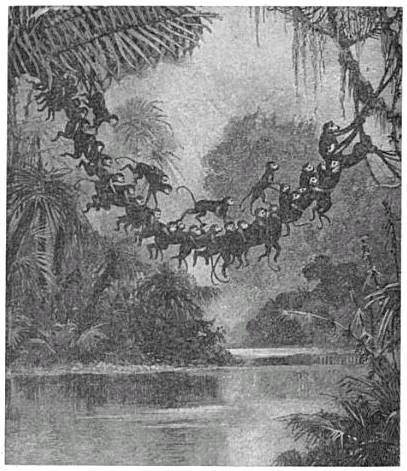
Do South American monkeys form living bridges in order to cross alligator-infested rivers? No modern naturalist thinks so, but the idea is curiously long-lived. Jesuit priest José de Acosta published the first account in Latin in 1589 — here’s a 1604 translation:
Going from Nombre de Dios to Panama, I did see in Capira one of these monkies leape from one tree to an other, which was on the other side of a river, making me much to wonder. They leape where they list, winding their tailes about a braunch to shake it: and when they will leape further than they can at once, they use a pretty devise, tying themselves by the tailes one of another, and by this meanes make as it were a chaine of many: then doe they launch themselves forth, and the first holpen, by the force of the rest, takes holde where hee list, and so hangs to a bough, and so helpes all the rest, till they be gotten up.
For a 1919 report in Natural History, biologist E.W. Gudger tracked down similar seemingly firsthand accounts by William Dampier’s navigator (1699), by Antonio de Ulloa (1735), and by Don Ramon Paez (1862) — but he concludes that they’re false: “Needless to say, this feat presupposes an amount of intelligence in the monkey family that it has never been known otherwise to exhibit, while aside from that, it is palpably impossible because nowhere in a tropical jungle could space be found in which to swing such a long chain as the story requires.”
